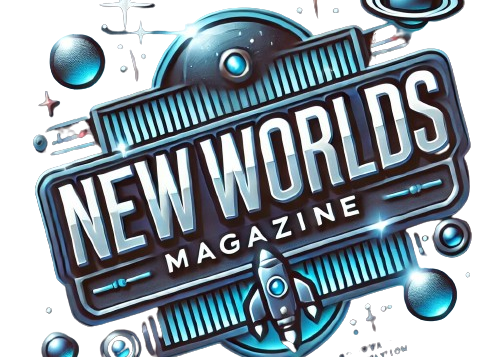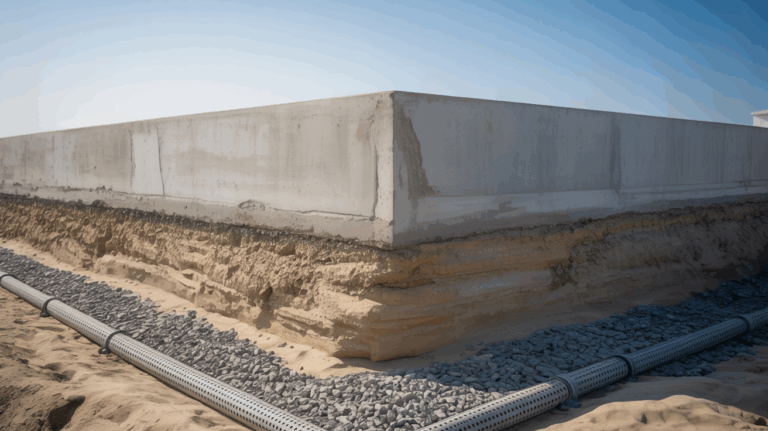The rise of biodegradable materials marks a remarkable leap forward in tackling the pressing environmental issues we face today. Picture this: these ingenious creations are crafted to break down naturally over time, standing as a promising alternative to conventional plastics that litter our planet and exacerbate waste woes. Innovations abound in this arena—think bioplastics born from renewable resources like cornstarch, sugarcane, and various organic wonders! By swapping out traditional materials for these eco-friendly choices, industries can dramatically shrink their ecological footprints without sacrificing product performance.
Now, let’s explore the diverse realms where biodegradable materials make their mark—packaging, textiles, consumer goods—you name it! In the packaging sector particularly, companies are jumping on board with enthusiasm to curb plastic waste; they’re responding directly to that growing wave of consumer demand for greener options. Meanwhile, in textiles, breakthroughs have ushered in biodegradable fibers that not only lessen environmental burdens but also elevate clothing lifespan. As research marches onward and innovation sparks new ideas, we can expect these sustainable solutions to become more scalable and affordable—fuelling even broader adoption and championing sustainability across an array of industries!
Impact on Environmental Sustainability
The movement toward biodegradable materials marks a pivotal leap in our quest for environmental sustainability. Traditional plastics, with their stubborn persistence, weave a tale of long-lasting pollution that wreaks havoc on ecosystems and wildlife alike. In stark contrast, these eco-friendly substitutes decompose at a much swifter pace, effectively curtailing the buildup of waste in both landfills and oceans—a refreshing change indeed! This shift not only alleviates ecological damage but also cultivates a circular economy where materials are deftly reused and recycled.
Moreover, embracing these innovative materials empowers industries to align with regulatory mandates while catering to an ever-growing consumer appetite for greener products. Companies willing to champion biodegradable options can bolster their brand image while playing an active role in fostering sustainable practices. This paradigm shift sparks creativity—igniting research into new biopolymers destined to further lighten our environmental load. As the call for sustainability grows louder among organizations, we can anticipate a broader integration of biodegradable materials that ushers in even more sweeping benefits for our planet.
Robotics and Automation
The fusion of robotics and automation across diverse sectors heralds a remarkable leap in productivity and operational prowess. Industries—think manufacturing, logistics, healthcare—are embracing these cutting-edge technologies like never before, seeking to streamline processes, slash labor costs, and curtail human error. Picture this: automated systems executing repetitive tasks with uncanny precision! This liberates human workers to dive into the deep end of complex responsibilities that demand critical thinking and a splash of creativity. It’s not merely an enhancement; it’s a revolution—a turbocharged boost in efficiency that accelerates production cycles, yielding faster response times and elevating service delivery to new heights.
But wait! The narrative thickens as robotic systems evolve beyond their conventional confines. Autonomous vehicles are on the horizon for transportation and delivery—a seismic shift shaking up supply chain dynamics. In the realm of healthcare? Robotic-assisted surgeries are rewriting the playbook by granting surgeons unparalleled precision and control over procedures, significantly enhancing patient outcomes. These groundbreaking advancements underscore the transformative potential nestled within robotics and automation—a force driving innovation while simultaneously elevating quality of life across myriad domains.
Enhancing Efficiency in Manufacturing
The fusion of robotics and automation into the very fabric of manufacturing has sparked a seismic shift in operational workflows, like a whirlwind reshaping the landscape. Cutting-edge robotic systems don’t just enhance precision; they redefine it in realms such as assembly, packaging, and quality control—each task executed with an almost uncanny accuracy. Automation swoops in, dramatically slashing the chances for human error to creep in, ensuring that products not only meet but often exceed stringent quality benchmarks. As a result? Manufacturers find themselves soaring to new heights of output while simultaneously trimming down production cycle times.
But there’s more! The advent of smart technologies ushers in an era where real-time monitoring and analysis reign supreme over production metrics. This data-driven paradigm empowers manufacturers to pinpoint bottlenecks and inefficiencies lurking within their operations like shadows waiting to be uncovered. By tapping into insights from these analytics—a treasure trove of information—companies can refine processes with surgical precision, obliterate wasteful practices, and ultimately slash costs. The cumulative impact? A cascade of innovations that propels operational efficiency skyward while securing a competitive edge amidst the relentless currents of an increasingly globalized marketplace.
Advances in Space Exploration
Recent strides in the realm of space exploration have catapulted humanity tantalizingly closer to the tantalizing prospect of sustainable life beyond our blue planet. With rocket technology advancing at a breakneck pace, bolstered by an intriguing mix of government and private sector funding, costs associated with launching payloads into orbit are plummeting like never before. Targeted missions to the Moon and Mars are not just ambitious—they’re crucial quests for vital data that might determine whether these distant worlds could cradle human habitation.
Amidst this cosmic pursuit lies the fascinating concept of in-situ resource utilization, a fancy term for harnessing local materials—think water, oxygen, fuel!—to alleviate our dependency on Earth’s bounty. Imagine explorers tapping into Martian ice or lunar regolith; it’s both practical and groundbreaking!
Meanwhile, the quest doesn’t stop there: asteroid exploration is gaining traction too! Robotic missions tasked with snagging samples from these celestial wanderers promise insights that could unveil secrets locked since the dawn of our solar system—secrets pivotal to understanding planetary formation and where we humans fit into this grand tapestry called life.
And let’s not overlook how cutting-edge technologies like autonomous drones paired with AI-driven navigation systems are revolutionizing mission execution. Picture complex operations unfolding seamlessly with minimal human touch—a dance between machines making sense of chaos in deep space! This burgeoning repository of knowledge isn’t merely academic; it’s shaping strategies for future human settlements and resource extraction among the stars. Buckle up—the cosmos awaits!
The Future of Human Settlements Beyond Earth
Humanity’s relentless pursuit to carve out a foothold beyond our blue planet has surged into high gear in recent years. With rocket technology hurtling forward and innovative space habitat designs taking shape, we stand on the precipice of creating sustainable human colonies on celestial wonders like Mars and the Moon. A tapestry of agencies and private enterprises is pouring resources into long-duration missions—each voyage revealing vital truths about surviving in alien landscapes.
Consider this: life support systems, radiation shielding, resource utilization strategies—they’re not just buzzwords but essential elements being meticulously dissected. The ultimate goal? To ensure that future off-world settlements don’t merely exist but flourish amid the cosmic backdrop.
Meanwhile, research delving into terraforming and tapping local resources unfolds new avenues for crafting livable ecosystems. These strategies highlight a tantalizing prospect: harnessing materials from distant worlds to generate crucial supplies, thereby lessening our reliance on Earth’s bounty. International collaboration in space exploration ignites an exhilarating exchange of ideas and innovations—a melting pot where knowledge breeds success stories for humanity’s interstellar ambitions.
As technological breakthroughs emerge at a dizzying pace, the dream of human life extending its reach beyond Earth transforms from mere fantasy to an increasingly plausible reality. Each step taken opens up uncharted territories brimming with possibilities for exploration and habitation—the universe beckons!
| Location | Potential Use | Current Status | Key Research Focus |
|---|---|---|---|
| Moon | Base for lunar exploration and research | Ongoing missions by NASA and private companies | Regolith utilization and radiation protection |
| Mars | Human settlement and potential terraforming | Multiple planning missions including Mars 2020 | Life support systems and resource extraction |
| Europa (Moon of Jupiter) | Potential for underwater habitats | Proposed missions for future exploration | Subsurface ocean research and ice analysis |
| Asteroids | Resource mining for materials | Conceptual missions under development | Mining technology and sustainable practices |
3D Printing Innovations
The whirlwind evolution of 3D printing technology is nothing short of a revolution, reshaping manufacturing landscapes across a plethora of industries. Picture this: the ability to conjure up complex structures and intricate designs out of thin air! This groundbreaking innovation slashes waste and paves the way for on-demand production like never before. Customization? It’s no longer an elusive dream; businesses can now sculpt products that cater meticulously to the unique whims and fancies of their clients. Take healthcare and aerospace, for instance—these sectors are reaping immense rewards from rapid prototyping and the crafting of feather-light components that supercharge efficiency and performance.
But wait, there’s more! The marriage between advanced materials—think metals, ceramics, even bio-compatible substances—and 3D printing has catapulted its applications into uncharted territories. Companies are diving headfirst into sustainability by harnessing recycled materials in their production processes. This shift not only champions responsible resource management but also ignites a wildfire of innovation in product design, potentially birthing solutions that tread lightly on our planet. As we gaze toward the horizon, it becomes clear: the future of manufacturing hinges upon unlocking every facet of 3D printing’s potential, heralding a seismic shift in traditional supply chains and age-old production methodologies.
Transforming Manufacturing and Supply Chains
The rise of 3D printing technology is revolutionizing the very fabric of manufacturing and supply chains, sparking a whirlwind of change. This groundbreaking technique unleashes astonishing levels of customization and rapid prototyping, allowing businesses to pivot with agility in response to market whims. Picture this: components crafted right on-site, slashing transportation costs and obliterating the lengthy lead times that plague traditional manufacturing methods. Furthermore, the capacity to forge intricate geometries—once confined to the realm of dreams—has birthed designs that are not only lighter but also more resilient, ultimately elevating product performance into new heights.
But wait! There’s more! Supply chains themselves are reaping rewards from weaving 3D printing into their production tapestry. The old-school model often leans heavily on sprawling networks of suppliers and logistics—the gears grinding away as materials and components shuffle between locations like an elaborate dance. Enter additive manufacturing: a game-changer capable of streamlining or even erasing vast portions of this intricate web, significantly lowering the chances for delays and disruptions along the way. Such a metamorphosis doesn’t merely bolster resilience within supply chains; it also champions sustainability efforts by curbing material waste and slashing energy consumption—a win-win scenario in an ever-evolving industrial landscape!
- Enhanced customization options for products tailored to specific customer needs
- Reduced transportation costs by enabling on-site production of components
- Minimized lead times that often accompany traditional manufacturing methods
- Improved design flexibility, allowing for intricate and innovative product development
- Increased resilience in supply chains by simplifying logistics and reducing dependence on multiple suppliers
- Contribution to sustainability goals through decreased material waste and energy consumption
- Greater agility for manufacturers to quickly adapt to changing market demands and preferences
The Internet of Things (IoT)
The Internet of Things (IoT)—a term that dances on the lips of tech enthusiasts and everyday users alike—is upending the traditional dynamics of device interactions, weaving a tapestry where gadgets whisper secrets to one another and engage in a dialogue with us. Picture this: an intricate web connecting everything from your trusty coffee maker to sprawling industrial machinery, all partaking in a symphony of seamless communication. Data flows like electricity, collected and transmitted in real-time—an unceasing stream fueling enhanced monitoring and management across various tasks. The result? A surge in operational efficiency paired with smart decision-making.
As IoT technology evolves at breakneck speed, it unfurls opportunities for living spaces that are not just smarter but almost intuitive—think savvy homes brimming with devices that optimize energy consumption while reinforcing security measures. Meanwhile, industries are reaping rewards through predictive maintenance strategies and finely-tuned supply chain logistics. These leaps forward aren’t merely about personal convenience; they lay down the groundwork for groundbreaking solutions to some of our most perplexing global challenges—ushering in a world that’s more connected than ever before, teeming with possibilities for efficiency that can astonish us all!
Connecting Devices for a Smarter World
The Internet of Things (IoT) marks a staggering transformation in the way devices engage—not just with each other, but also with us, mere mortals. Imagine this: everyday objects—your coffee maker, your washing machine, and even those colossal industrial machines—are now infused with connectivity. Yes, that’s right! IoT cultivates a sprawling network of savvy gadgets capable of collecting, sharing, and analyzing data like never before. This webbed ecosystem does more than just sprinkle convenience on our lives; it catapults efficiency to dizzying heights across all sorts of industries. Take smart thermostats as an example—they’ve got quite the knack for learning their owners’ preferences and optimizing energy use while slashing utility bills.
And wait—it gets better! The infusion of IoT tech into urban landscapes is forging paths toward smarter cities that hum along efficiently. Picture this: traffic signals chatting away with public transit systems and environmental sensors gathering real-time data galore. Such insights empower city planners to make astute decisions that enhance public services and optimize resource management. Think about predictive maintenance in utilities or transportation; it’s not just about minimizing disruptions anymore—it’s about elevating the quality of life for citizens everywhere! As we ride this wave of technological evolution, brace yourself—the applications are bound to reshape our interactions not only with our surroundings but also among ourselves in ways we’ve yet to imagine!
Conclusion
The relentless march of progress in science and technology is set to redefine every nook and cranny of contemporary existence. Consider the explosion of innovations—biodegradable materials, robotics that dance with precision, and the marvels of 3D printing. They do more than just tackle urgent dilemmas; they turbocharge production methods while championing environmental sustainability. As these technologies evolve at breakneck speed, we catch tantalizing glimpses of a future where efficiency waltzes hand-in-hand with ecological mindfulness.
And then there’s the sprawling frontier of space exploration paired with the Internet of Things—a harbinger of an era brimming with connectivity and revelation. These breakthroughs are not confined to mere theory; they’re transforming into tangible experiences that promise to overhaul human life as we know it. Imagine a world where these advancements seamlessly weave into our daily routines, paving the way for smarter, more sustainable solutions for generations yet unborn!







